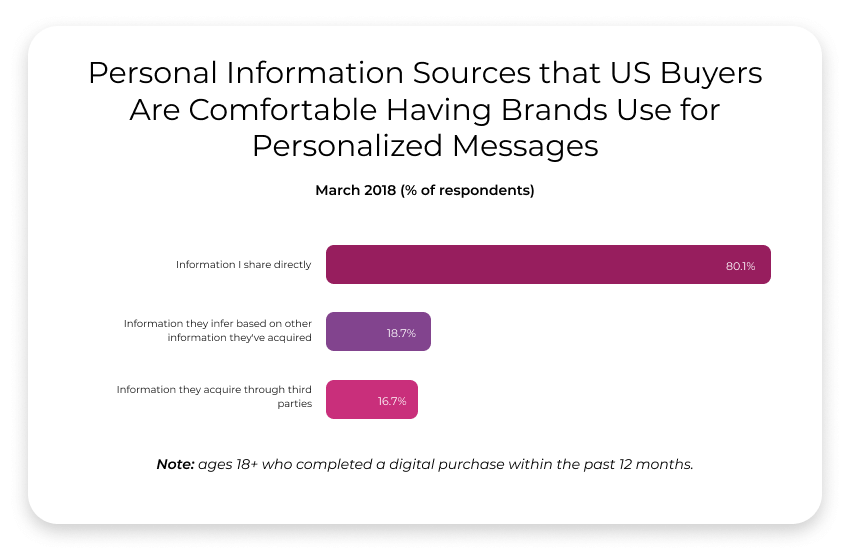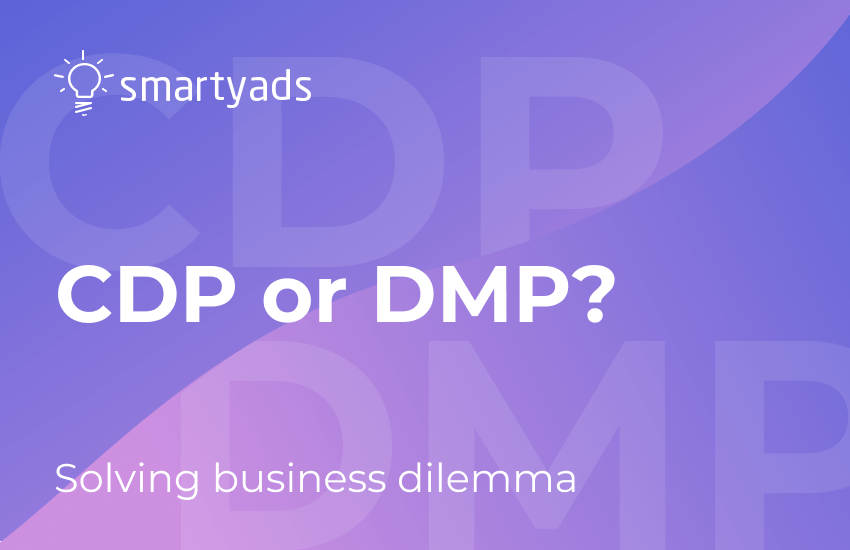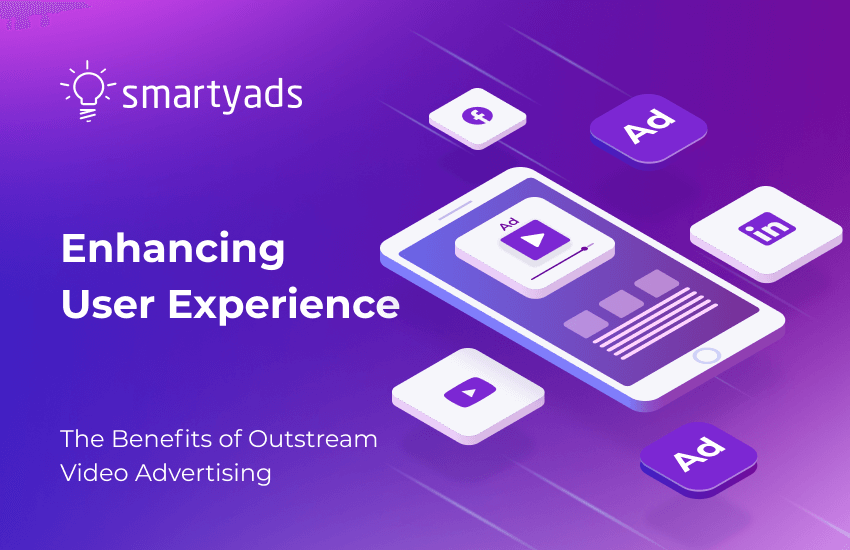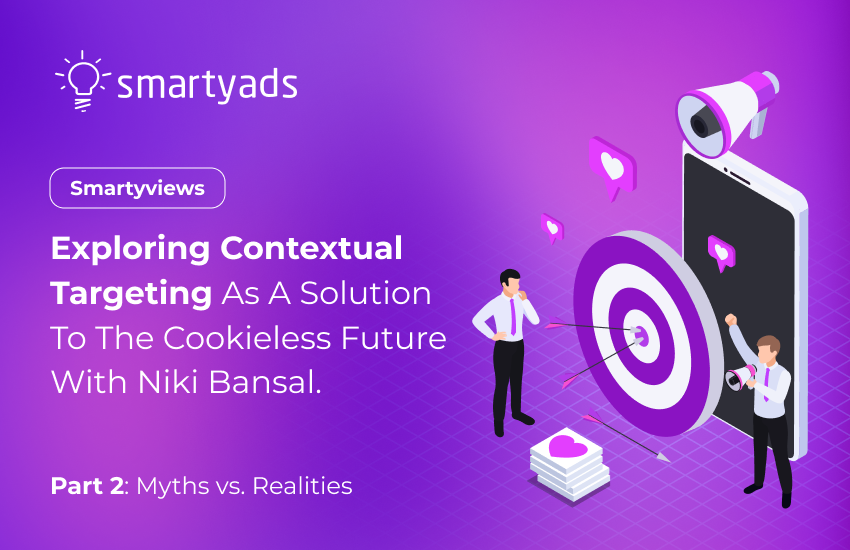The difference between CDP and DMP is in the following two components: DMP mostly functions based on third party data while CDP makes use of all (third, second and first-party-data definition). CDP is created for multipurpose marketing tasks and adtech DMP works well for programmatic ad buying (and targeting on the DSP platform).
Thus, there’s no CDP vs DMP battle. Unlike DMPs, CDPs can aggregate first-party data (from CRM, website, transactions, social media, etc.) which can be then integrated into DMPs. Still, unlike CDPs, DMPs can integrate this data into programmatic targeting. Now let’s discover the full list of differences, review application cases for customer data platform and master data management on DMP.
What is a CDP? (customer data platform)?
A customer data platform (CDP) is more of a marketing solution than advertiser-based. It extracts PII personally identifiable information from different marketing sources. Then, it creates a unified database and allows other software solutions to access this aggregated data.
What is a DMP (data management platform)?
Data management platforms (DMPs) collect, sort, analyze, and store anonymous customer data sets mostly retrieved from such data sources like cookies (used for programmatic targeting and retargeting).
Customer management platforms: full list of differences
Both a CDP and a DMP are designed to collect and process customer data. However, there are plenty of criteria according to which one can juxtapose: customer data platform vs data management platform.
How CDPS and DMPS deal with data
| Data | DMP | CDP |
| Where used | It only collects data for advertising (targeting) on DSP. Improves the efficiency of media purchases. | Across marketing channels. Integrates with all adtech tools. |
| Types of data | Cookies (third-party data), plus integrates 1st and 2nd party data from CDP. | PII 1st-party data retrieved directly from customers, some amount of 2nd- and 3rd-party data. Collects names, postal and email addresses, phone numbers, etc. |
| Sources of data | Tags on websites and mobile apps, cookies, APIs, S2S integrations. | Web and mobile analytics tools, CRM, transactional systems, subscriptions and newsletter signups. |
| Data storage time | Up to 90 days. A DMP is not able to store PII data. | Data doesn’t expire but can be updated real-time as users provide new information about themselves. |
| Data detalization | Data isn’t structured but organized into segments applicable for targeting. | Data is detailed and organized into user profiles. Presented in chronological order. |
| Integration & portability | Data can be transmitted to ad tech tools (DSP, SSP) and ad networks. | Data can be transmitted to every marketing channel and tool. |
How DMP & CDP work with customer bases
| Customers | DMP | CDP |
| Customer Views | Access only to audience segments built on a probabilistic method. Since data is anonymous, a DMP’s algorithm can only guess what’s the connection between data pieces and split it into the roughly determined categories. Belonging to the category can’t be changed since data is already labeled before uploading into a DMP. | Access to a single customer view based on a deterministic method. A CDP matches users to their data utilizing their email addresses (or other unique IDs) and merging all information connected through various channels in the one profile. Also, it moves users between categories in real-time, since data may be easily updated. |
| Customer Journey Map | Only effective on stages of awareness and consideration, when you actively advertise your product/service to the user. | May be used throughout the whole customer journey. |
| Customer profile | A DMP builds temporary anonymous profiles based on non-PII IDs like cookies, demographic information, or Google Advertising IDs. | A DCP builds complete user profiles with all available information about the person (name, age, addresses, phone number, etc). |
| Personalized user experience | Only suitable to serve targeted ads to customers, no other personalization is available. | Analyzing the buying behavior of a particular customer, a CDP is able to improve personalized marketing campaigns. |
| Personalized user experience | Only in advertising (mostly in programmatic advertising conducted via DSPs, SSPs, and ad exchanges). | Multiple communication and marketing channels including email, social media, advertising, etc. |
Payment. If you select between customer data management platforms like CDP and adtech DMP, keep in mind that they also be different in terms of payment models. With DMP you pay for the temporary access to pre-built segments of information that doesn’t belong to you but is used/re-used for programmatic targeting. With CDP, you’re paying for the database technology that can collect your proprietary 1st party data along with data purchased from third-party sources.
CDP vs. DMP: What to choose for your business?
DMP & CDP advertising is something that big brands like Amazon, Uber, and Netflix never underestimate. Why? Using internal data-systems, like CDPs and DMP, these companies can track the entire path of the buyer, use third, second and first-party-data, and measure interaction with customers. Exactly the combination of DMP & CDP allows big brands to combine these functions and intensify productiveness of their promotion to a superior level.
Companies that focus on customer data in their marketing endeavors are 6x times more likely to have higher profits YoY compared to their counterparts that neglect the data. According to the DMA (Data & Marketing Association) statistical fact book, 44% of marketers use a data management platform, while 33% of them are planning to integrate it into their workflow.
One could say that there is nothing to discuss, the choice is clear since the CDP has more applications However, there is no need to overpay for more features if you are an advertiser and only want to use 3rd-party data in display advertising. A DMP manages audience segmentation just well, while a CDP lacks the ability to gather anonymous 3rd-party data.
Also, a DMP may come in handy if you don’t have resources to collect 1st party data, or you need to segment your customers based on their activity on 3rd-party websites.
But if your priority is 1st-party data delivered by your customers, you should understand what is a CDP and what it can do for your marketing and advertising campaigns. Worth noting, 80.1% of users prefer receiving personalized messages based on information they shared with the brand directly (i.e. on 1st-party data). Taking this into consideration, it is better to utilize a CDP if you decide to implement personalized experiences in your marketing strategy.

So if you are a marketer and need data to promote your product through various marketing channels, a CDP is your pick.
However, both data management platforms DMP and CDP can’t do much without linking to other martech or ad tech tools. To reap the most benefits from your data, you need to transmit it to other software. The only common software these platforms support are programmatic solutions used to serve ads to an end customer.
Wrapping it up
Data management platform vs customer data platform - in this battle both appear to be winners. A DMP is a great choice when it comes to gathering data for ad targeting and regathering. Still, a CDP beats it up if you need to utilize data for walking customers through their whole journey from the first contact to the final purchase. Thus, CDP vs DMP is not a dilemma because both systems perform different functions, even though some features may overlap.
Regardless of the chosen option, you can integrate your data management system with a Demand-Side Platform to launch an advertising campaign. Or, if you want to monetize your website, take advantage of a Supply-Side Platform and sell your inventory programmatically. SmartyAds is a full-stack programmatic advertising solution that has platforms for both advertisers (DSP) and publishers (SSP). They support API integration with every data or customer data management platform your business might need.


